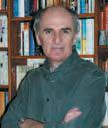
Physiology News Magazine
Sydney Ringer’s grave – worthy of a proper memorial?
David Miller asks whether the Society could mark the grave of a very influential physiologist
Features
Sydney Ringer’s grave – worthy of a proper memorial?
David Miller asks whether the Society could mark the grave of a very influential physiologist
Features
David Miller
University of Glasgow
https://doi.org/10.36866/pn.51.36

Sydney Ringer (1835–1910) and his work surely deserve to be more widely celebrated. There were meetings in the UK and Canada dedicated to his memory on the centenary of his publication on the composition of physiological saline capable of maintaining the beat of the (frog’s) heart (Ringer, 1883). In truth, however, he remains essentially unknown despite being nominally acknowledged in many physiologists using ‘Ringer’s solution’. This fate of obscurity, suffered by too many influential scientists, does not serve physiology well.
Physiologists need hardly be reminded of the debt we owe Ringer. He started the evolution that has led to modern cell culture media and blood or tissue fluid ‘replacement’ salines. Without this no isolated cells or tissues could usefully be studied. His discoveries were the underpinning of saline infusion in clinical practice. The ‘recipe’ for ‘physiological saline’ surely ranks with blood transfusion itself as a major life-saver, essential in posttrauma interventions and as a prerequisite to most modern surgery.
Ringer was present at the inaugural scientific meeting of the Society (UCL, December 1880), demonstrating ‘the effects of lime and potash on the frog’s heart’. He was a member from 1884. He chaired the dinner of March 1891 where a motion was passed ‘’That in the opinion of this Society it is important that, as recommended by the General Medical Council, a large part if not the whole of the additional year which is to be added to the medical curriculum should be devoted to Elementary Physics, Chemistry, and Biology’. Plus ca change?
Around the time of the frog-heart paper’s centenary, I first had the opportunity to visit the beautiful village of Lastingham, near Pickering in North Yorkshire, where Ringer had a home for many years. He was from a Norfolk Quaker family. However, upon his marriage (to one Anne Darley, the daughter of the local Lord of the Manor) he evidently invested in a fine house in the north Yorkshire moors. This was a ‘weekend’ and family retreat from his busy, successful clinical practice and professorship in London (UCL). It was here he enjoyed his retirement. He died after a stroke in October, 1910 and now lies buried in the churchyard. As someone who has made a few litres of his solutions over the years, I wanted to ‘pay my respects’. Lastingham’s church (St Mary’s) is a magical, ancient place with a unique 7th century Saxon crypt. Regrettably, there is no explicit record of Ringer or his scientific work in the church or in its guide book, save for mention of the donation he (‘Dr Sidney [sic] Ringer’) made towards the major restoration done (in the 1880s) to commemorate his daughter Anne. (She died tragically at her own 7th birthday party, apparently after choking on a plum stone). After much searching in the churchyard, I located his grave. It is prominent only by its being bounded, together with his wife’s grave, by a black metal rail. The gravestone markings are badly eroded, can barely be read and reward careful scrutiny merely with his name and dates. The grave itself looks like those around it, venerable only because of its evident age but anonymous and certainly undistinguished. When I visited again in October 2002, by coincidence on the very anniversary of his death, nothing had changed.
It would surely be appropriate for the Society to fund and donate suitably worded, permanent plaques so that visitors may know something of the work of Professor Sydney Ringer, FRS. Perhaps one could be lodged prominently in the church, with another near his grave, The visitors’ book reveals that the church attracts people from around the world probably including some others who hoped to find something marking the connection of Lastingham with Ringer’s eminence and significance as a physician and physiologist. The Society could also encourage the tourist board and local historical societies to publicise the connection of Lastingham with a scientist whose work has affected the lives and wellbeing of so many more than presently know it.
Reference
Ringer S (1883). A further contribution regarding the influence of the different constituents of the blood on the contraction of the heart. J Physiol 4, 29.

Tilli Tansey, the Society’s Archivist, responds:
I am of the strong belief that anything that can point a little to our illustrious past is good. There are several great names, many of them the founding fathers of the Society and pioneers in the subject, who are not recognized or commemorated at all, and certainly not by the Society. History can be used very effectively as PR and to get the subject across to the general public in many very palatable ways, and some of the suggestions of wider contacts seem very sensible. I have looked at a few Lastingham websites and, as the church is the village’s main selling point, emphasizing the significance of one of the people buried there would be a very good idea.
